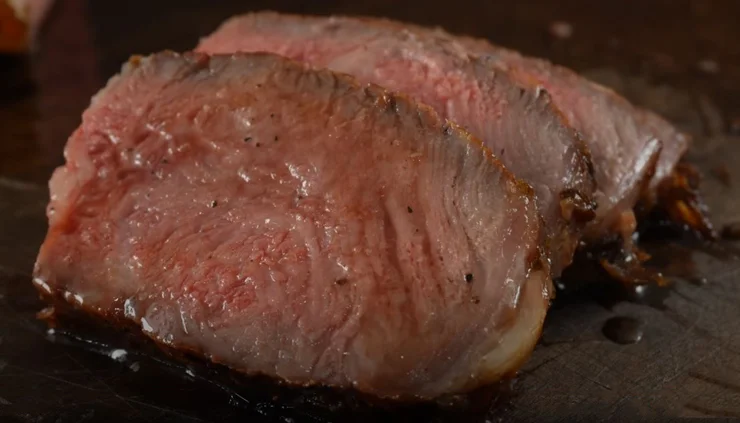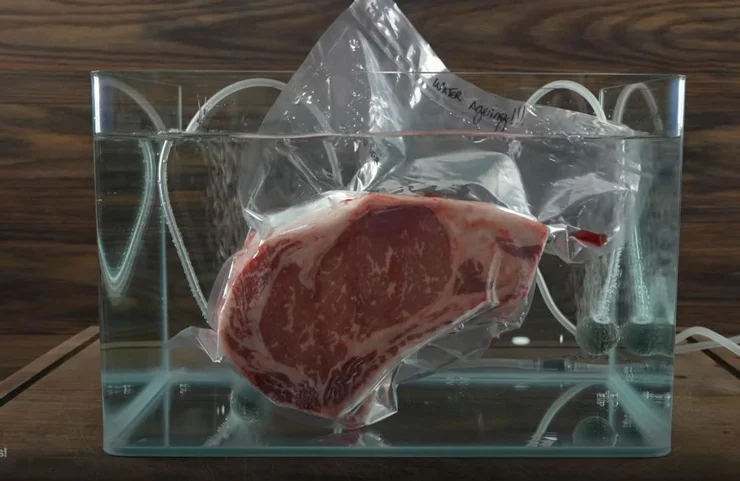
The Steak Experiment That Will Blow Your Mind: Have You Heard of Water Aging?
For most carnivores, there’s a primal satisfaction that comes with a perfectly cooked steak. The sear, the aroma, the anticipation as you slice into that juicy goodness – it’s a ritual, a celebration of meaty indulgence. I myself have long considered myself a steak aficionado. Dry-aged for weeks? Been there, done that. Wet-aged for peak tenderness? Weekends wouldn’t be the same without it. But lately, a question has been nagging at me: is there a better way?
Enter Guga Foods, a YouTube channel that consistently pushes the boundaries of culinary exploration. And their latest conquest? Water aging – a technique that had me raising an eyebrow (and a healthy dose of skepticism). Submerge a steak in water for weeks? It sounded like a recipe for disaster, not a path to steak nirvana. But curiosity, as always, got the better of me. So, I grabbed my most skeptical friends, a quality cut of meat, and dove headfirst into the world of water aging.
What is Water Aging?
Traditionally, steak aging involves dry aging or wet aging. Dry aging involves exposing the steak to controlled air circulation and temperature, allowing enzymes to break down connective tissues and concentrate flavors. Wet aging involves vacuum-sealing the steak in its own juices, achieving a similar effect with a slightly different flavor profile.
Water aging, however, throws a whole new element into the mix. Here’s the gist:
- A prime cut of steak is submerged in a container filled with purified water.
- A fish tank pump constantly circulates the water, maintaining a consistent temperature between 32-39 degrees Fahrenheit (0-4 degrees Celsius).
- The steak is aged for the same duration as traditional methods (typically around 50 days).
Why Water Aging? The Science Behind the Sizzle
The theory behind water aging is quite interesting. Water is a fantastic conductor of heat, which means the temperature of the steak will remain consistent throughout the aging process. Unlike dry aging, there’s no risk of surface dehydration, potentially leading to juicier steaks. Additionally, the constant water circulation might accelerate the enzymatic breakdown of connective tissues, resulting in an even more tender final product.
So, Does it Work? Let’s Get Cooking!
Guga puts water aging to the test by comparing it to a control steak (freshly cut) and a wet-aged steak. All three steaks are cooked to a perfect medium-rare and subjected to a taste test by a panel of experts. The results are astounding:
- The water-aged steak has a noticeably different texture, even more tender than the wet-aged version.
- The flavor profile is unique, with a hint of sourness attributed to a potential fermentation process during aging. This isn’t an off-putting flavor, but rather a subtle complexity that elevates the steak experience.
- Overall, the water-aged steak is declared the clear winner, boasting superior juiciness, tenderness, and a captivatingly complex flavor.
Why You Should Be Excited About Water Aging
While water aging is still a new technique, the initial results are incredibly promising. Here’s why you should be excited:
- Potentially juicier and more tender steaks: The constant water circulation and potentially accelerated enzymatic breakdown could lead to unparalleled steak texture.
- Unique flavor profile: The hint of sourness adds a new dimension to the steak experience, making it even more interesting for adventurous palates.
- Possible accessibility: While the video showcases a specific setup, water aging might translate to simpler methods at home in the future.
A Note of Caution: Experimentation Needed
It’s important to remember that water aging is still under exploration. Guga himself acknowledges the need for further experimentation to refine the technique and understand the science behind it. Here are some things to keep in mind:
- Safety: Maintaining proper water sanitation is crucial to avoid bacterial growth.
- Flavor profile: While the sourness is intriguing, it might not be for everyone.
- Accessibility: The current setup requires specific equipment. Simpler methods for home cooks might be needed for wider adoption.
The Future of Steak: A Watery Revolution?
Water aging has the potential to be a game-changer in the world of steak. With its promise of superior texture, intriguing flavors, and potentially simpler methods in the future, water aging might just become the new standard for steak connoisseurs. So, the next time you fire up the grill, keep an eye out for water-aged options – you might just experience a steak revelation!









